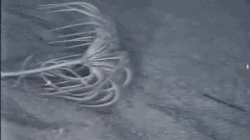 Fig. 1: Gif-movie showing crawling crinoid in quick motion.
Fig. 1: Gif-movie showing crawling crinoid in quick motion.Picture from cover of Palaeontologia Electronica Vol 10/1
Baumiller and Messing (2007) report that extant isocrinids are able to move as fast as 10 - 30 mm per second using their "arms" to crawl over the seafloor (fig. 1). Although some groups of crinoids were suggested and proven to perfom some sort of locomotion, the authors provide evidence for an almost "benthic-vagile" lifestyle of a group of organisms that is largely recognized as de facto sessile.
This contribution concerns me for two reasons. First, I am highly interested if there are some trace fossils that were found to represent crinoid locomotion (see fig. 2) and second, the portion of crinoids suggested to apply this kind of locomotion is highest in the Triassic (fig. 3).
 Fig. 2: Traces of Davidaster rubiginosa in a fishtank experiment, scale bar: 20 mm (Baumiller and Messing, 2007).
Fig. 2: Traces of Davidaster rubiginosa in a fishtank experiment, scale bar: 20 mm (Baumiller and Messing, 2007). Fig. 3: Generic diversity of crinoids from Ordovician to modern times. Red bars represent the portion of crinoidtaxa that might have been able to perform the observed mode of locomotion (Baumiller and Messing, 2007).
Fig. 3: Generic diversity of crinoids from Ordovician to modern times. Red bars represent the portion of crinoidtaxa that might have been able to perform the observed mode of locomotion (Baumiller and Messing, 2007). Working in the lower Triassic with a keen interest in ichnology, I will keep this work in my head when returning to the field. Does anybody knows about crinoid trace fossils?
Reference
Baumiller, T.K., and Messing, C.G., 2007: Stalked Crinoid locomotion, and its ecological and evolutionary implications. Palaeontologia Electronica, v. 10/1. http://palaeo-electronica.org/paleo/2007_1/crinoid/index.html
Baumiller, T.K., and Messing, C.G., 2007: Stalked Crinoid locomotion, and its ecological and evolutionary implications. Palaeontologia Electronica, v. 10/1. http://palaeo-electronica.org/paleo/2007_1/crinoid/index.html



1 comment:
Actually, I know about crinoid trace fossils - thus far I've found none. I'm a student of Baumiller's, and I've written a manuscript on them, including descriptions of what they should look like. It's still in prep, but if you email me directly, I'll send you a copy of the manuscript.
Post a Comment